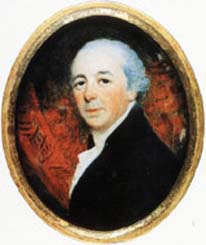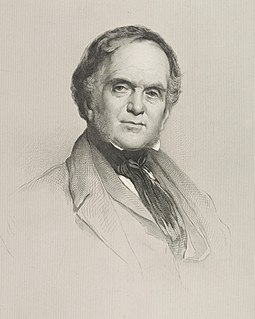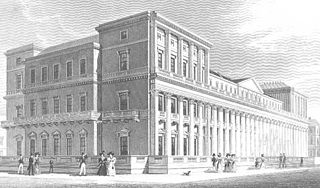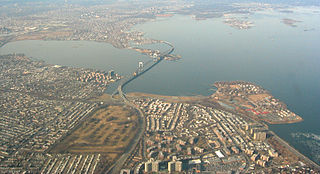
York Gate is an entrance to Regent's Park, London, designed by John Nash in 1822. [1] It separates the east and west parts of York Terrace. It was designed as five separate houses. [2]

York Gate is an entrance to Regent's Park, London, designed by John Nash in 1822. [1] It separates the east and west parts of York Terrace. It was designed as five separate houses. [2]
In 1998 1-5 York Gate was acquired by the Royal Academy of Music thanks to funding from the Heritage Lottery Fund. [2] Past residents have included Francis Palgrave, [2] William Charles Macready [2] and Stephen William Silver. [3] Silver developed what became known as the York Gate Library while a resident there. This consisted of over 5,000 volumes and was subsequently bought by the South Australian branch of the Royal Geographical Society of Australasia. [3]

The City of Westminster is a city and borough in Inner London which forms a core part of Central London. It is the site of the United Kingdom's Houses of Parliament and much of the British government. It occupies a large area of central Greater London, including most of the West End. Many London landmarks are within the borough, including Buckingham Palace, Westminster Abbey, Whitehall, 10 Downing Street, and Trafalgar Square.

Paddington is an area within the City of Westminster, in central London. First a medieval parish then a metropolitan borough, it was integrated with Westminster and Greater London in 1965. Three important landmarks of the district are Paddington station, designed by the engineer Isambard Kingdom Brunel and opened in 1847; St Mary's Hospital; and the former Paddington Green Police Station.

John Nash was one of the foremost British architects of the Georgian and Regency eras, during which he was responsible for the design, in the neoclassical and picturesque styles, of many important areas of London. His designs were financed by the Prince Regent and by the era's most successful property developer, James Burton. Nash also collaborated extensively with Burton's son, Decimus Burton.

Hyde Park is a Grade I-listed major park in Central London. It is the largest of four Royal Parks that form a chain from the entrance of Kensington Palace through Kensington Gardens and Hyde Park, via Hyde Park Corner and Green Park past the main entrance to Buckingham Palace. The park is divided by the Serpentine and the Long Water lakes.

Regent's Park is one of the Royal Parks of London. It occupies high ground in north-west Inner London, administratively split between the City of Westminster and the Borough of Camden. In addition to its large central parkland and ornamental lake, it contains various structures and organizations both public and private, generally on its periphery, including Regent's University and London Zoo.

Primrose Hill is a Grade II listed public park located north of Regent's Park in London, England, first opened to the public in 1842. It was named after the 64 metres (210 ft) natural hill in the centre of the park, the second highest natural point in the London Borough of Camden. The hill summit has a clear view of central London, as well as Hampstead and Belsize Park to the north and is adorned by an engraved quotation from William Blake. Based on the popularity of the park, the surrounding district and electoral ward were named Primrose Hill.

Decimus Burton was one of the foremost English architects and urban designers of the 19th century. He was the foremost Victorian architect in the Roman revival, Greek revival, Georgian neoclassical and Regency styles. He was accomplished also in the cottage orné, picturesque and neogothic styles. He was a founding fellow and, later, vice-president of the Royal Institute of British Architects, and architect to the Royal Botanic Society from 1840 and an early member of the Athenaeum Club, London, whose club premises he designed and which the company of father, James Burton, the pre-eminent property developer of Georgian London, built. Modern architectural historians Guy Williams (1990) and Dana Arnold (2004) contend that Burton's contribution to architecture has been underestimated: as a consequence of the misattribution to John Nash of many of his works; of his vituperation by his neo-gothic rival, Augustus Pugin; and of the consequent retention of his archives by his family.

William Henry PlayfairFRSE was a prominent Scottish architect in the 19th century, who designed the Eastern, or Third, New Town and many of Edinburgh's neoclassical landmarks.

Carlton House Terrace is a street in the St James's district of the City of Westminster in London. Its principal architectural feature is a pair of terraces of white stucco-faced houses on the south side of the street overlooking St. James's Park. These terraces were built on Crown land between 1827 and 1832 to overall designs by John Nash, but with detailed input by other architects including Decimus Burton, who exclusively designed numbers 3 and 4.

Bay Terrace is a neighborhood in the northeastern section of the New York City borough of Queens. It is often considered part of the larger area of Bayside. Bay Terrace overlooks the East River and the approaches to the Throgs Neck Bridge from the Clearview Expressway and Cross Island Parkway. It is bounded on the west by the Clearview Expressway, on the south by 26th and 28th Avenues, to the east by the Little Neck Bay, and to the north by the East River.

The Crown Estate Paving Commission (CEPC) is the body responsible for managing certain aspects of the built environment around Regent's Park, London. It was established by statute in 1824. It fulfills some local government functions, and is one of the few bodies in the United Kingdom still empowered to levy rates on residential property. Although it has local government functions and tax-raising powers, its members are not elected but are appointed by the Lords of the Treasury. It is a separate body from the Crown Estate, which holds the freehold of Regent's Park.

Regent Terrace is a residential street of 34 classical 3-bay townhouses built on the upper south side of Calton Hill in the city of Edinburgh, Scotland. Regent Terrace is within the Edinburgh New and Old Town UNESCO World Heritage Site inscribed in 1995.

Marylebone, is a district in the West End of London, in the City of Westminster. Oxford Street, Europe's busiest shopping street, forms its southern boundary.

Park Crescent is a mid-19th-century residential development in the Round Hill area of Brighton, part of the English city of Brighton and Hove. The horseshoe-shaped, three-part terrace of 48 houses was designed and built by one of Brighton's most important architects, Amon Henry Wilds; by the time work started in 1849 he had 35 years' experience in the town. Wilds used the Italianate style rather than his more common Regency motifs. Three houses were replaced after the Second World War because of bomb damage, and another was the scene of one of Brighton's notorious "trunk murders" of the 1930s. The three parts of the terrace, which encircle a private garden formerly a pleasure ground and cricket pitch, have been listed at Grade II* by English Heritage for their architectural and historical importance.

York Terrace overlooks the south side of Regent's Park in Marylebone, City of Westminster, London, England. York Terrace West is a Grade I listed building. York Terrace East contains Grade II listed buildings. 1–18 York Terrace East is listed at Grade I.
This is a list of the etymology of street names in the area of Regent's Park in London ; the area has no formal boundaries, though it generally thought to be delimited by Prince Albert Road to the north, Park Village East and Hampstead Road/the Euston railway line/Eversholt Street to the east, Euston Road and Marylebone Road to the south and Park Road and Baker Street to the west,

Carlton Terrace is a residential street in Edinburgh, Scotland. It is located on the east side of Calton Hill, at the eastern extremity of the New Town, part of the UNESCO World Heritage Site inscribed in 1995.
Stephen William Silver was born to Stephen Winckworth Silver and his wife, Frances Susan Adams, on 7 May 1817. He was a brother of Hugh Silver. They were London merchants, who took over running S. W. Silver and Co. from their father in 1846. He was responsible for developing the company's industrial presence in the area to the west of North Woolwich which became known as Silvertown taking its name from the company.

Primrose Hill is a district in the London Borough of Camden, England. Electorally, it is mainly within the Camden Town with Primrose Hill ward, though some other wards do overlap.